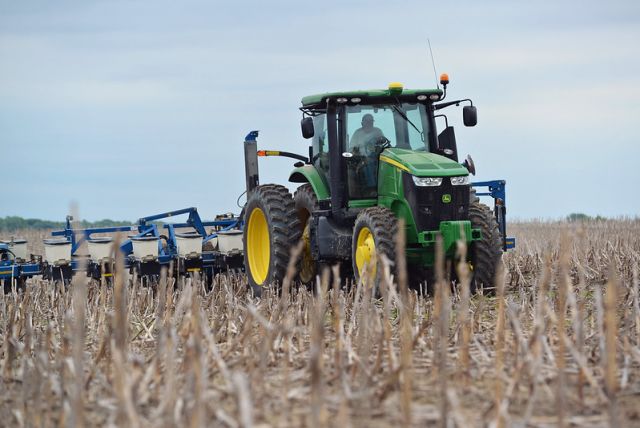SOURCE: World Resources Institute
DATE: May 12, 2020
SNIP: Regenerative agriculture has become the darling of many policymakers, food companies and farmers. Advocates claim a triple win: climate change mitigation, increased profit for farmers and greater resilience to a changing climate. Our view is that the practices grouped as regenerative agriculture can improve soil health and yield some valuable environmental benefits, but are unlikely to achieve large-scale emissions reductions.
There is broad agreement that most regenerative agriculture practices are good for soil health and have other environmental benefits. No-till reduces soil erosion and encourages water to infiltrate soils (although it can require greater use of herbicides). Cover crops do the same, and can also reduce water pollution. Diverse crop rotations can lower pesticide use. And good grazing practices — such as moving cattle around frequently, adding legumes or fertilizers, and avoiding overgrazing — can increase vegetation and protect water sources.
The thinking behind regenerative practices as a climate mitigation strategy is to remove carbon dioxide out of the air by storing it as organic carbon in soils. While practices like adding manure can increase soil carbon, the feasibility of scaling such practices over large areas to substantially increase soil carbon and mitigate climate change is much less clear. Our own report analyzing mitigation options in the food and land sector concluded that the practical potential was at best modest due to several challenges, including:
Uncertain benefits: There’s limited scientific understanding of what keeps soil carbon sequestered, and, as a result, uncertainty about whether regenerative practices actually sequester additional carbon. For example, there is an active scientific debate about whether no-till, the primary practice relied upon by proponents of regenerative agriculture to generate climate benefits, actually increases soil carbon when properly measured.
Faulty carbon accounting: Carbon must be added to soils to increase soil carbon, and this carbon must ultimately come from plants that absorb carbon from the air. But if the direct sources of carbon would have otherwise been stored or used elsewhere, it simply moves carbon from one place to another, achieving no additional reduction in emissions. Calculations of carbon benefits from soil carbon sequestration on a specific farm often omit off-farm effects that produce emissions elsewhere, as illustrated in the graphic. For example, manure is filled with the carbon and nutrients absorbed originally by plants and eaten by animals. For that reason, adding manure to a field increases soil carbon where it is applied. But because there is a limited supply of manure in the world, using it in one place almost always means taking it from elsewhere, so no additional carbon is added to the world’s soils overall.
The need for large quantities of nitrogen: Another limitation on storing soil carbon is the need for nitrogen, which usually comes in the form of fertilizer. For carbon to remain in soils for more than a short time, scientists generally agree that it must be converted into microbial organic matter. This requires around one ton of nitrogen for every 12 tons of carbon sequestered (in addition to the nitrogen used and removed by the growth). Applying more nitrogen to agricultural lands to increase soil carbon would be problematic, whether added through fertilizer or nitrogen-fixing legumes. Only some of the added nitrogen would likely be captured and turned into soil carbon; much would escape into waterways, where it would fuel algal growth and water pollution.
[Read the whole article for the full picture.]

